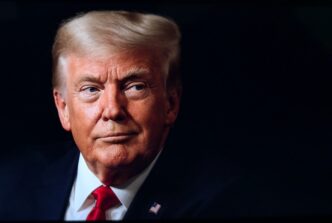In a notable shift, small business confidence has taken a hit. The National Federation of Independent Business’s (NFIB) confidence index saw a sharper drop than anticipated in January, following an optimistic surge credited to Trump’s policies the prior month. Economist David Rosenberg of Rosenberg Research starkly points out in his Feb. 11 analysis that “the honeymoon is over,” referencing the chaos attributed to policy decisions emanating from Washington. Specifically, Trump’s administration has enacted tariffs on Chinese imports as well as most steel and aluminum products, while suggesting more tariffs might follow globally. Tariffs, by nature, elevate costs and consumer prices, yet a weary public is showing signs of inflation fatigue, displaying acute sensitivity to price increases. This sentiment is echoed in reduced spending and cutbacks in small businesses’ growth projections, even as there remains a cautious optimism towards potential reductions in regulations and taxes by Trump’s administration.
Another concerning sign is the decline in public trust regarding Trump’s economic handling, as reported by Morning Consult. In a span of three weeks, confidence in Trump’s economic stewardship has taken a dive: net approval on the economy has plummeted from 16 percentage points to 5, on trade from 13 points to just 4, and on taxes, a similar drop from 13 to 4 points. Although a majority still seem to back Trump’s economic plans, the speed of this decline is striking. During the 2024 elections, voters clearly voiced their priorities, emphasizing the need to reduce costs. However, in his initial month, Trump’s executive measures have not significantly tackled essential areas like food, rent, and healthcare prices, which dominate public concerns. Additionally, tariffs worsen these issues by likely nudging prices upwards, as seen with the new steel and aluminum duties affecting costs of everyday products like canned goods and fresh produce from Mexico. Yet, Trump appears unfazed.
The fear of rising inflation persists. With Trump’s initial actions, Americans are growing more concerned about inflationary pressures. Back in October, pre-election, the University of Michigan’s monthly sentiment survey forecasted inflation to be 2.7% in a year. It now projects a 4.3% inflation rate over the same period, largely attributing this uptick to Trump’s tariff strategies. Inflation is already hovering at 2.9%, and consumers, still reeling from high inflation in recent years, are bracing for steeper costs. Notably, previous trade wars launched by Trump have shown that tariffs inflate prices without providing corresponding economic benefits. While they can boost profits in protected sectors, it is purchasers who shoulder the increased costs, which can dampen employment and cut production in sectors dependent on these pricier goods. Some investors anticipate that Trump might retreat from harsher measures if a stock market decline or negative economic feedback arises. However, signs of disapproval are already surfacing, both from business owners and consumers, regarding Trump’s current economic direction.
As Trump’s economic policies unfold, the anticipated benefits of tax cuts and deregulation stand in sharp contrast to the prevailing concerns over inflation and market instability. While some may hold out hope for a recalibrated approach, the early indicators offer a sobering view of the potential economic turbulence ahead.








